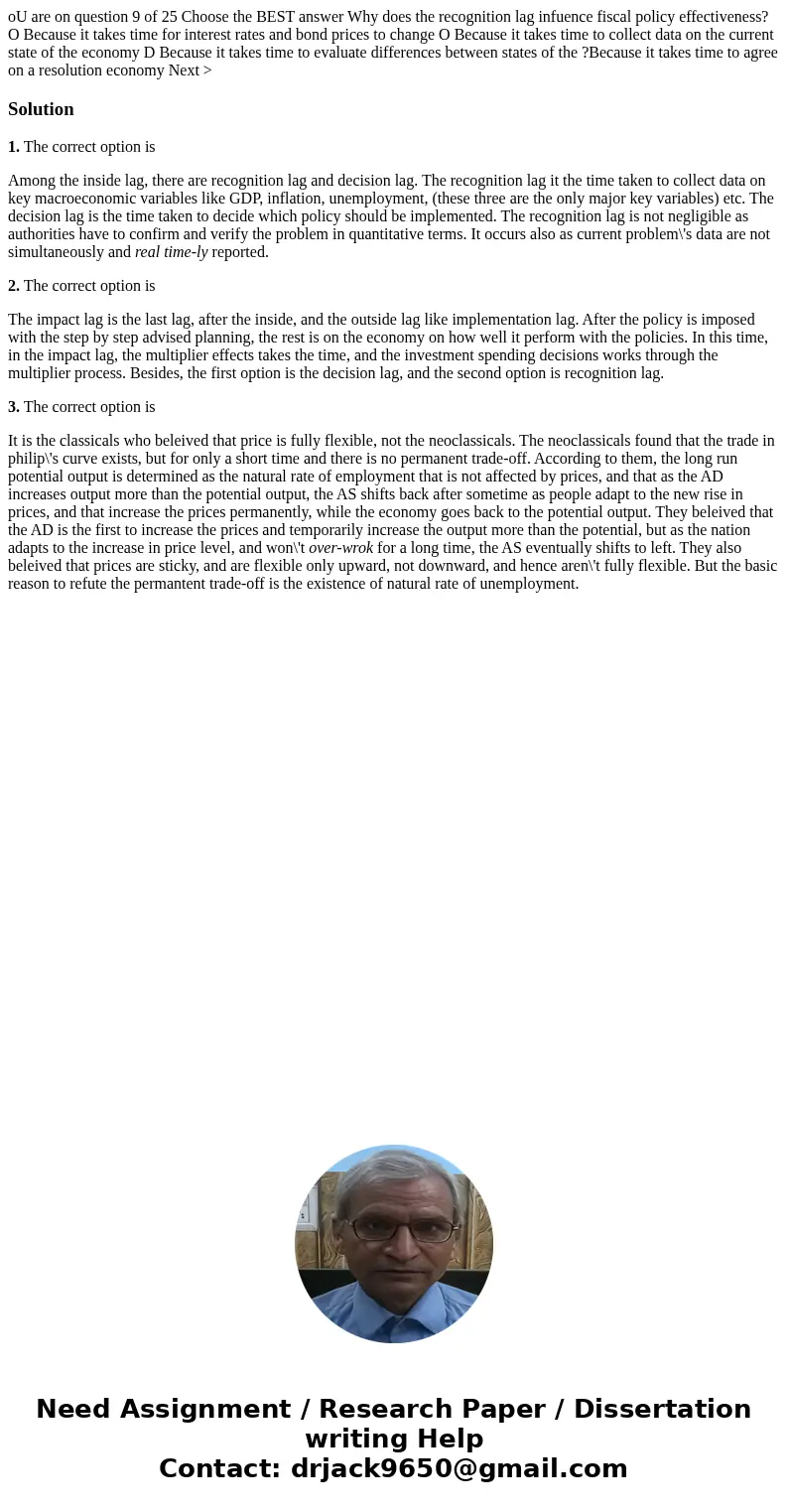oU are on question 9 of 25 Choose the BEST answer Why does t
Solution
1. The correct option is
Among the inside lag, there are recognition lag and decision lag. The recognition lag it the time taken to collect data on key macroeconomic variables like GDP, inflation, unemployment, (these three are the only major key variables) etc. The decision lag is the time taken to decide which policy should be implemented. The recognition lag is not negligible as authorities have to confirm and verify the problem in quantitative terms. It occurs also as current problem\'s data are not simultaneously and real time-ly reported.
2. The correct option is
The impact lag is the last lag, after the inside, and the outside lag like implementation lag. After the policy is imposed with the step by step advised planning, the rest is on the economy on how well it perform with the policies. In this time, in the impact lag, the multiplier effects takes the time, and the investment spending decisions works through the multiplier process. Besides, the first option is the decision lag, and the second option is recognition lag.
3. The correct option is
It is the classicals who beleived that price is fully flexible, not the neoclassicals. The neoclassicals found that the trade in philip\'s curve exists, but for only a short time and there is no permanent trade-off. According to them, the long run potential output is determined as the natural rate of employment that is not affected by prices, and that as the AD increases output more than the potential output, the AS shifts back after sometime as people adapt to the new rise in prices, and that increase the prices permanently, while the economy goes back to the potential output. They beleived that the AD is the first to increase the prices and temporarily increase the output more than the potential, but as the nation adapts to the increase in price level, and won\'t over-wrok for a long time, the AS eventually shifts to left. They also beleived that prices are sticky, and are flexible only upward, not downward, and hence aren\'t fully flexible. But the basic reason to refute the permantent trade-off is the existence of natural rate of unemployment.

 Homework Sourse
Homework Sourse